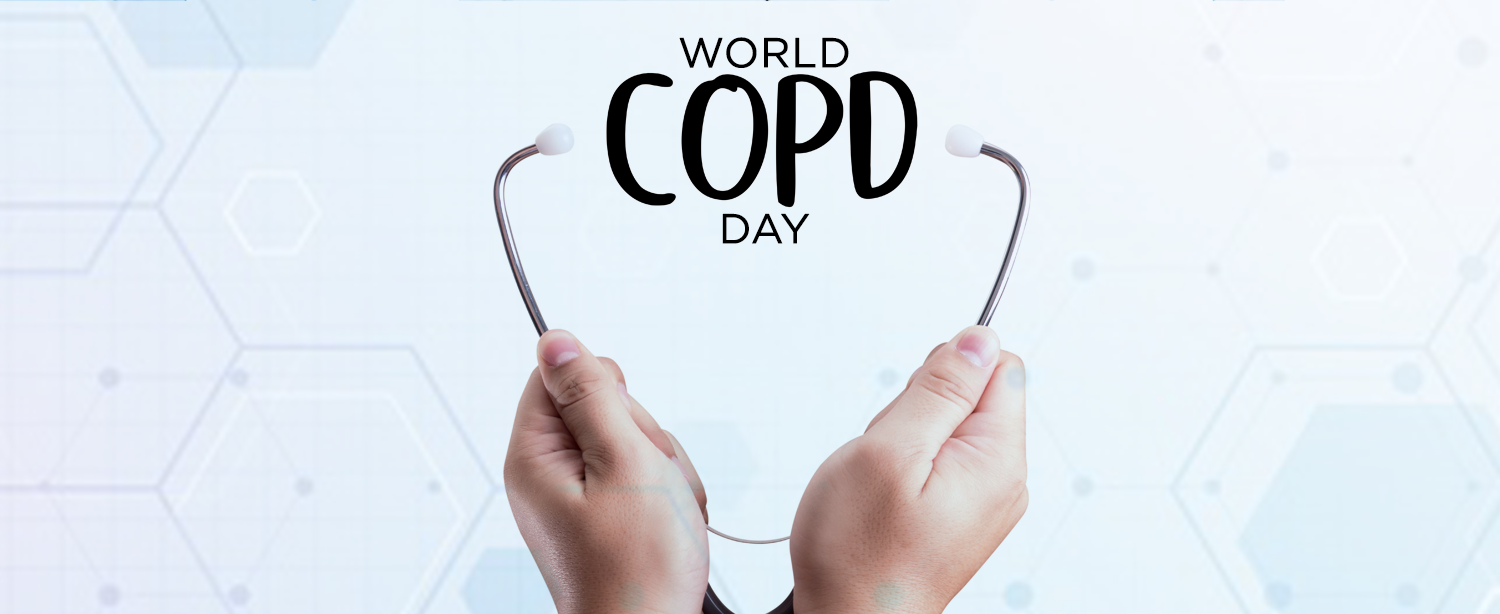Chronic obstructive pulmonary disease (COPD) is a chronic lung disease that makes breathing progressively more difficult. COPD isn’t a single lung disease. It’s really two diseases that cause airflow blockage and breathing problems. It includes emphysema, which makes it hard to breathe, and chronic bronchitis, which is a mucus-producing cough that doesn’t go away. Most people with COPD have both. Roughly one-third, or 30%, of adults don’t know what COPD is, hence awareness of the diseases is the first step towards recovery.
Symptoms of COPD
COPD makes it harder to breathe by reducing the flow of air through the lungs. Reduced airflow may be caused by inflammation (airways may thicken and lose elastic quality), destroyed lung tissue and blockages of mucus.
Often, people don’t recognize the symptoms of COPD until later stages of the disease. Here are some symptoms to look out for:
- Chest tightness.
- Shortness of breath.
- Blueness of the lips or fingernail beds.
- Wheezing.
- The need to clear the throat of mucus first thing in the morning.
- A chronic cough that may produce mucus.
- Frequent respiratory infections.
- Lack of energy.
- Unintended weight loss (in later stages)
- Swelling in ankles, feet or legs.
Symptoms can be worse for a few days and become more manageable, then worsen again.
Causes of COPD
1. Smoking
About 85 to 90 percent of all COPD cases are caused by cigarette smoking. When a cigarette burns, it creates more than 7,000 chemicals, many of which are harmful. The toxins in cigarette smoke weaken your lungs’ defense against infections, narrow air passages, cause swelling in air tubes and destroy air sacs—all contributing factors for COPD.
2. Your Environment
What you breathe every day at work, home and outside can play a role in developing COPD. Long-term exposure to air pollution, second hand smoke and dust, fumes and chemicals (which are often work-related) can cause COPD. In rural India the burning of coal and wood for fuel also causes air pollution.
3. Alpha-1 Deficiency
A small number of people have a rare form of COPD called alpha-1 deficiency-related emphysema. This form of COPD is caused by a genetic (inherited) condition that affects the body’s ability to produce a protein (Alpha-1) that protects the lungs.
Treat COPD
There is no cure for COPD, but it can be treated. Those with COPD are at increased risk of developing heart disease, lung cancer and other conditions. Patients with COPD are encouraged to stop smoking and are often given medications to help with the symptoms and complications of the disease. Doctors may also prescribe lung rehabilitation or surgery to relieve symptoms. Sometimes, people with COPD receive lung transplants.
Prevent COPD
Here are some tips to keep your lungs healthy:
- Total abstinence from smoking. It is the worst possible thing someone can do to their lungs. Even second hand smoke is harmful.
- Patients with chronic lung disease such as asthma or COPD should try to minimize exposure to air of poor quality.
- Exercise, it allows your lungs to more efficiently supply the heart and muscles with needed oxygen.
- Eat antioxidant-rich foods, such as berries, other fruits with skins, leafy green vegetables, sweet potatoes, nuts, pomegranate juice. It is good for your lung health.
- Wear protective equipment (mask) when exposed to threats to the lungs at work (i.e., dust, particles, paint fumes and diesel exhaust).
COPD in India
Currently, COPD is the third largest killer affecting an estimated 210 million people worldwide. Almost 90 percent of COPD deaths occur in low and middle-income countries. In India, it is the second largest killer and causes 22 million deaths. However, the alarming fact is that 25-50 percent of people with clinically significant COPD are ignorant about the disease and there is rampant misdiagnosis too.
Quick facts on COPD
- COPD can make daily activities, such as walking up stairs, getting dressed, and doing chores around the house difficult.
- Inflammation in the lungs smolders on chronically for decades, resulting in progressive damage to the tissue that supports airway structures and the gas exchange surface of the lung.
- A characteristic of the inflammatory response of COPD is that it is not responsive to long-term medication with drugs such as corticosteroids, which are used successfully for prevention of asthma.
- As it takes many years for the inflammation in the lungs to have an effect, COPD is primarily a disease affecting people over the age of 40.
- Cessation of smoking is the only significant therapeutic intervention that can retard the accelerated decline in lung function experienced by smokers with COPD.
- Although there is no cure for COPD, there are medicines, procedures, and lifestyle changes that can slow the progress of the disease and lead to a higher quality of life.
Do not miss the warning signs of COPD. COPD is often not found until the disease is very advanced because people do not know the early warning signs. Shortness of breath is many times mistaken as a sign of aging. Consult experts at our Department of Pulmonary Medicine. Please find below link for more details:
https://www.kokilabenhospital.com/departments/clinicaldepartments/pulmonarymedicine/copd.html


